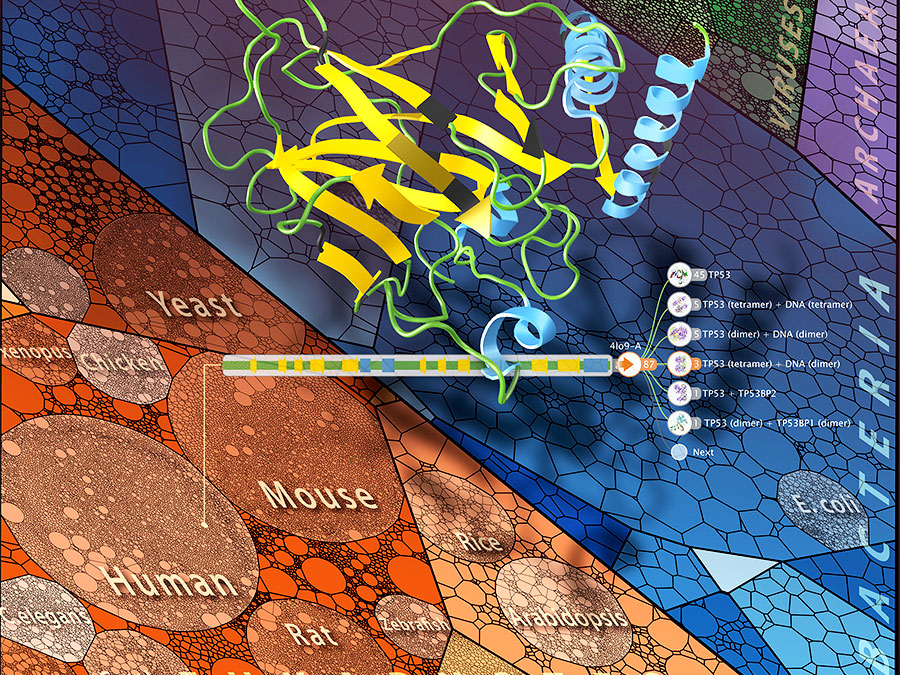"Aquaria" website serves up 3D structures of proteins for researchers
Virtual journey to the innards of proteins

Proteins assume essential tasks in our bodies. Well-known examples of proteins are insulin, hemoglobin, fibrinogen and antibodies. The three-dimensional structure of the proteins is decisive for their functionality.
When planning experiments or producing antibodies scientists need all the information they can get on proteins. There is a multitude of information available but "in the past, the search for protein structures was very tedious and required expert knowledge," explains Andrea Schafferhans from the Department of Bioinformatics at TUM. Together with Dr. Seán O’Donoghue from the Garvan Institute of Medical Research and CSIRO, she thus developed the "Aquaria" database. "In Aquaria all data are already processed," explains Schafferhans.
The scientists present their results in "Nature Methods." An international team of about a dozen programmers and bioinformatics experts contributed to the project, which commenced in 2009.
46 million computer models
"Aquaria" calculates the structure of most proteins. The principle behind the calculations: Proteins are made of amino acids. The sequence of these building blocks is know for many proteins. The precise spatial structure, on the other hand, is known for only very few. The scientists entered over 500,000 protein sequences into the database and compared these with the 100,000 known protein structures from the PDB protein structure database. The result is some 46 million computer models.
Now researchers only need to enter the name of the desired protein into the search field of the publically accessible website (http://aquaria.ws). The program serves up a page showing the actual three-dimensional structure or various possible structures of the protein. However, all kinds of other information are also displayed. For example, scientists can investigate how modifications in individual amino acids alter the protein structure – and, consequently, their functionality in the body. "In this way disease-triggering sequence variants can be viewed in their environments," explains Prof. Burkhard Rost. "This insight could be decisive in the development of medications or might facilitate understanding the effects of the variants."
Further functions in "Aquaria" are planned for the future, says Schafferhans. "We are looking at investigating interactions between small molecules like hormones and medications in more detail and making them searchable."
This project was funded by the Alexander von Humboldt Foundation in the context of the Humboldt Professorship of the chair holder, Professor Burkhard Rost.
Publication:
Seán I O'Donoghue, Kenneth S Sabir, Maria Kalemanov, Christian Stolte, Benjamin Wellmann, Vivian Ho, Manfred Roos, Nelson Perdigão, Fabian A Buske, Julian Heinrich, Burkhard Rost & Andrea Schafferhans. Aquaria: simplifying discovery and insight from protein structures, Nature Methods 12, 98–99 (2015), doi: 10.1038/nmeth.3258
Download highresolution picture
Contact:
Andrea Schafferhans
Technische Universität München
I12, Chair of Prof. Rost
Tel.: +49 289 17833
andrea.schafferhans@rostlab.org
https://www.rostlab.org/
Crystal Ladiges
Communication Manager
CSIRO Digital Productivity Flagship
+61 3 9545 2982 or +61 477 336 854
crystal.ladiges@csiro.au